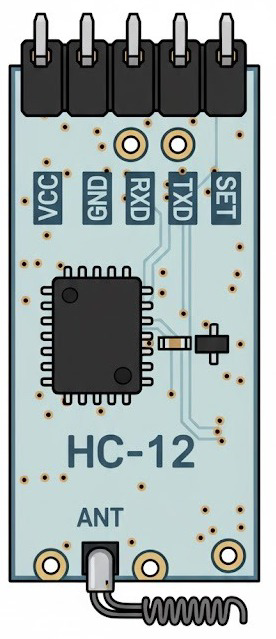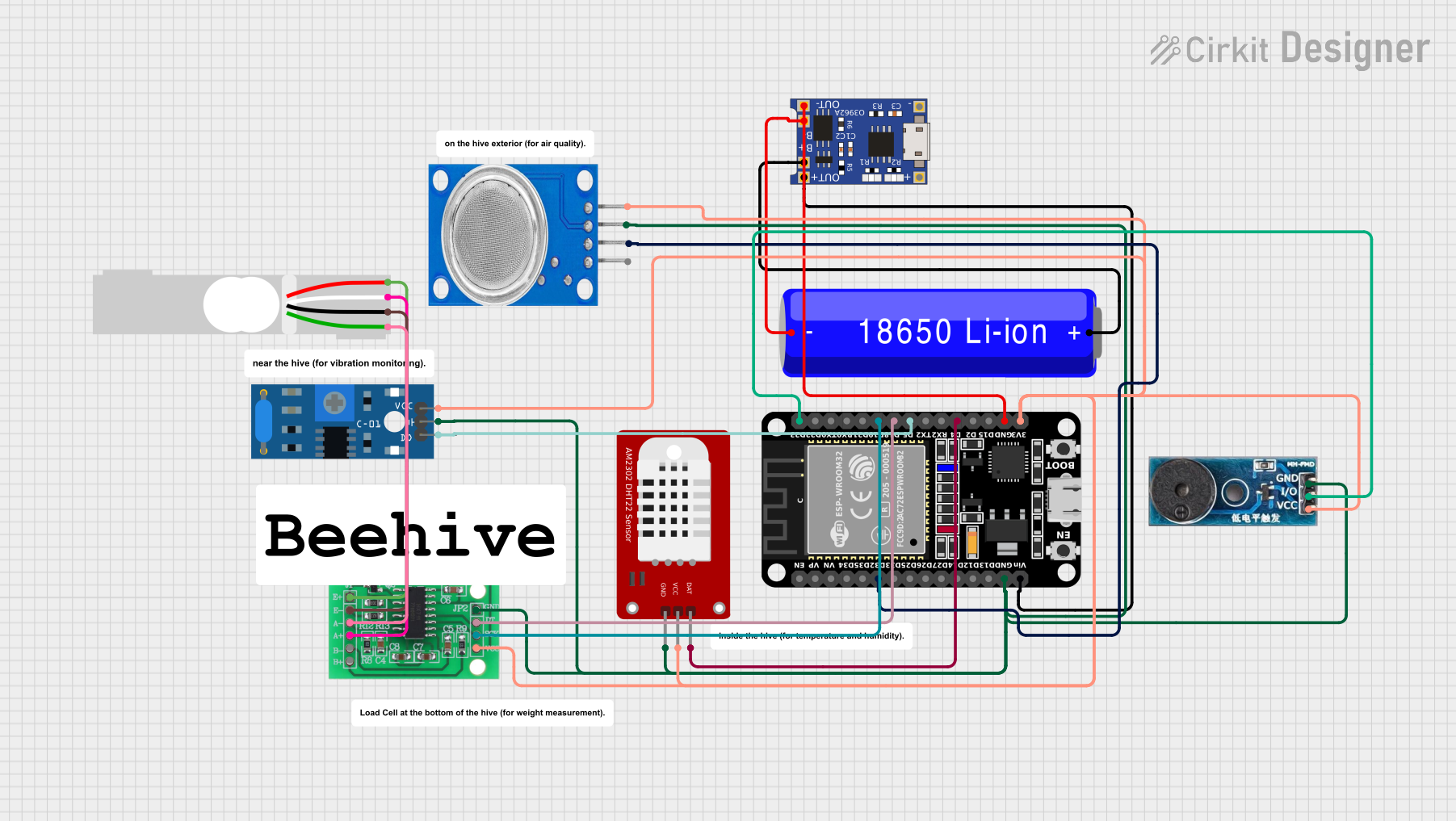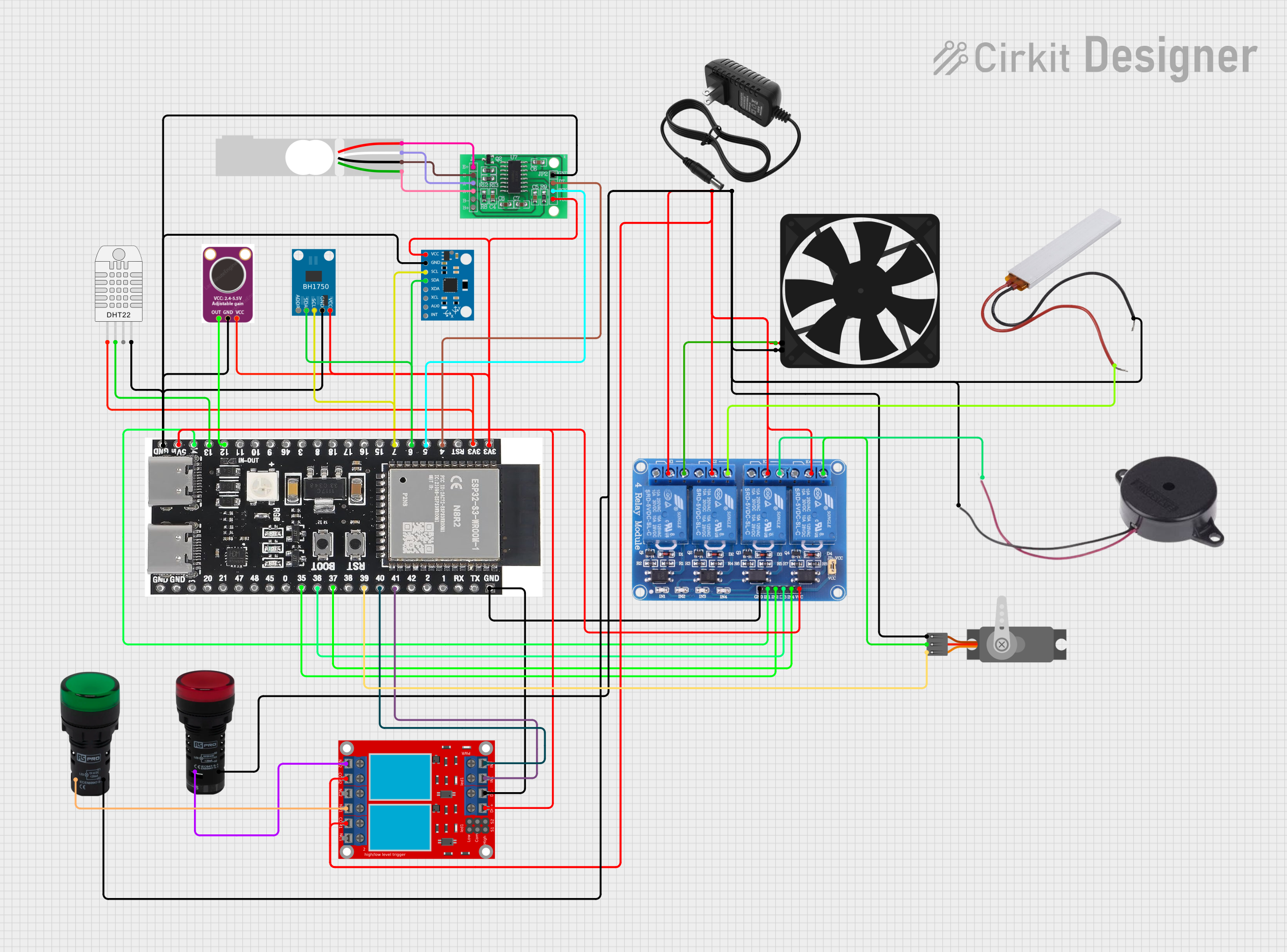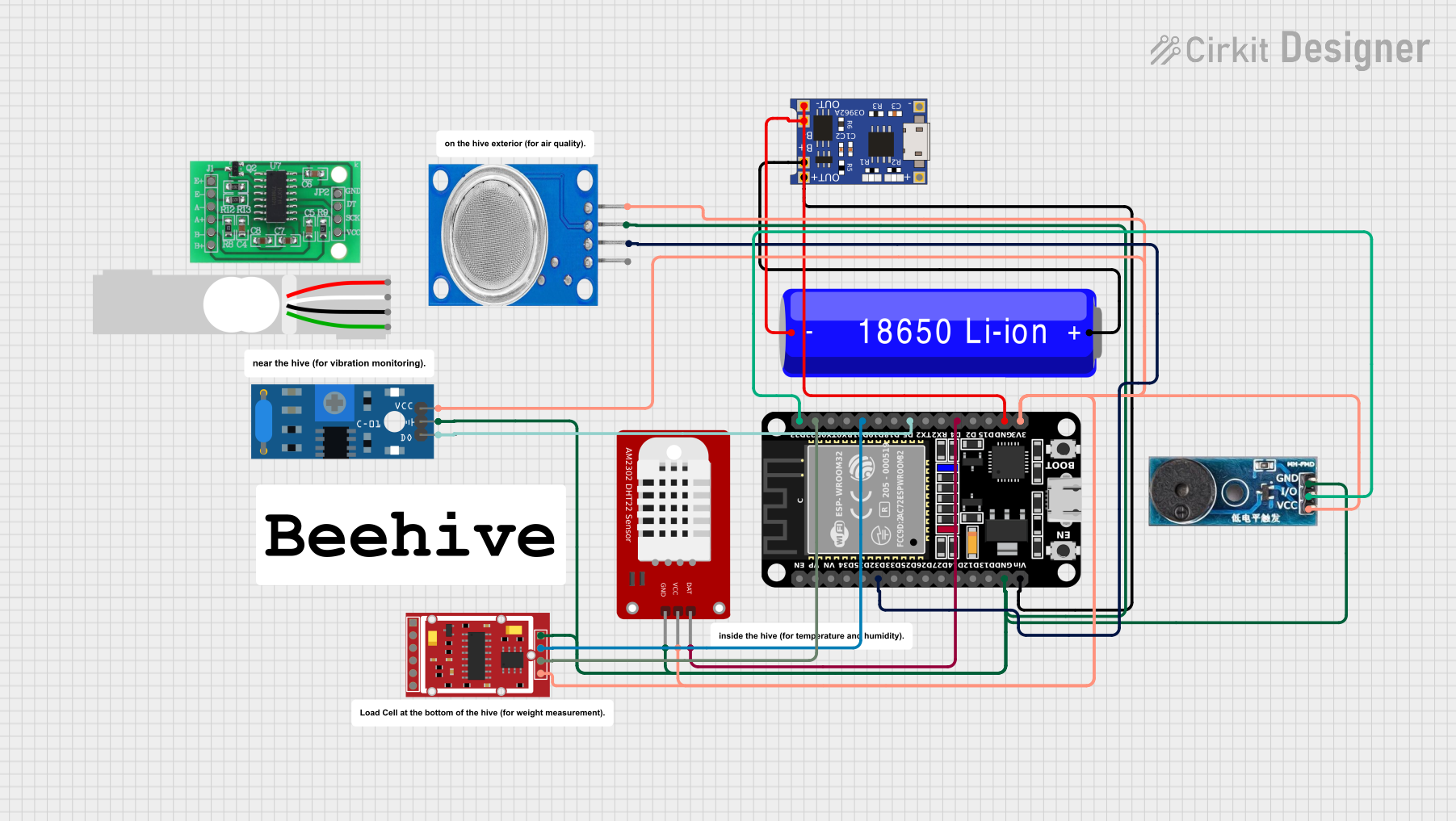
How to Use zig bee: Examples, Pinouts, and Specs

 Design with zig bee in Cirkit Designer
Design with zig bee in Cirkit DesignerIntroduction
Zigbee, manufactured by ZIG BEE with the part ID ZB, is a wireless communication protocol designed for low-power, low-data-rate applications. It operates on the IEEE 802.15.4 standard and is widely used in applications requiring reliable, energy-efficient, and secure communication. Zigbee is particularly popular in home automation, smart lighting, industrial control systems, and sensor networks due to its ability to form mesh networks, enabling devices to communicate over long distances by passing data through intermediate nodes.
Explore Projects Built with zig bee

 Open Project in Cirkit Designer
Open Project in Cirkit Designer
 Open Project in Cirkit Designer
Open Project in Cirkit Designer
 Open Project in Cirkit Designer
Open Project in Cirkit Designer
 Open Project in Cirkit Designer
Open Project in Cirkit DesignerExplore Projects Built with zig bee

 Open Project in Cirkit Designer
Open Project in Cirkit Designer
 Open Project in Cirkit Designer
Open Project in Cirkit Designer
 Open Project in Cirkit Designer
Open Project in Cirkit Designer
 Open Project in Cirkit Designer
Open Project in Cirkit DesignerCommon Applications
- Home automation (e.g., smart thermostats, lighting control)
- Industrial monitoring and control
- Wireless sensor networks
- Smart agriculture
- Healthcare monitoring systems
Technical Specifications
Below are the key technical details for the Zigbee (ZB) module:
| Parameter | Specification |
|---|---|
| Protocol Standard | IEEE 802.15.4 |
| Frequency Band | 2.4 GHz (global), 868 MHz (Europe), 915 MHz (USA) |
| Data Rate | Up to 250 kbps |
| Transmission Range | Up to 100 meters (indoor), 300 meters (outdoor) |
| Network Topology | Star, Tree, Mesh |
| Power Supply Voltage | 2.0V to 3.6V |
| Power Consumption | < 1 mW (low-power mode) |
| Security Features | AES-128 encryption |
| Operating Temperature | -40°C to +85°C |
Pin Configuration and Descriptions
The Zigbee module typically comes with the following pin configuration:
| Pin Number | Pin Name | Description |
|---|---|---|
| 1 | VCC | Power supply (2.0V to 3.6V) |
| 2 | GND | Ground |
| 3 | TX | UART Transmit (data output) |
| 4 | RX | UART Receive (data input) |
| 5 | RESET | Reset pin (active low) |
| 6 | DIO0 | Digital I/O pin 0 (configurable) |
| 7 | DIO1 | Digital I/O pin 1 (configurable) |
| 8 | ANT | Antenna connection for wireless communication |
Usage Instructions
How to Use the Zigbee Module in a Circuit
- Power Supply: Connect the VCC pin to a regulated 3.3V power source and the GND pin to the ground.
- UART Communication: Connect the TX and RX pins to the corresponding UART pins of your microcontroller (e.g., Arduino UNO).
- Antenna: Attach an appropriate antenna to the ANT pin for optimal wireless communication.
- Reset: Use the RESET pin to initialize the module if needed.
- Configuration: Configure the module using AT commands or a Zigbee coordinator software to set up the desired network topology (e.g., mesh, star).
Important Considerations and Best Practices
- Power Supply: Ensure a stable and noise-free power supply to avoid communication issues.
- Antenna Placement: Place the antenna away from metal objects or other sources of interference for better signal quality.
- Network Configuration: Use a Zigbee coordinator to manage the network and assign roles (e.g., coordinator, router, end device) to each module.
- Security: Enable AES-128 encryption to secure data transmission.
- Firmware Updates: Regularly update the module's firmware to ensure compatibility and security.
Example: Connecting Zigbee to Arduino UNO
Below is an example of how to connect and use the Zigbee module with an Arduino UNO:
Circuit Connections
- Zigbee VCC → Arduino 3.3V
- Zigbee GND → Arduino GND
- Zigbee TX → Arduino RX (Pin 0)
- Zigbee RX → Arduino TX (Pin 1)
Arduino Code
#include <SoftwareSerial.h>
// Define RX and TX pins for Zigbee communication
SoftwareSerial Zigbee(2, 3); // RX = Pin 2, TX = Pin 3
void setup() {
Serial.begin(9600); // Initialize Serial Monitor
Zigbee.begin(9600); // Initialize Zigbee communication
Serial.println("Zigbee Module Initialized");
Zigbee.println("Hello Zigbee!"); // Send a test message
}
void loop() {
// Check if data is available from Zigbee
if (Zigbee.available()) {
String data = Zigbee.readString(); // Read incoming data
Serial.print("Received: ");
Serial.println(data); // Print data to Serial Monitor
}
// Check if data is available from Serial Monitor
if (Serial.available()) {
String data = Serial.readString(); // Read user input
Zigbee.println(data); // Send data to Zigbee
}
}
Troubleshooting and FAQs
Common Issues and Solutions
No Communication Between Devices
- Cause: Incorrect UART connections or mismatched baud rates.
- Solution: Verify TX and RX connections and ensure both devices use the same baud rate.
Poor Signal Quality
- Cause: Interference or improper antenna placement.
- Solution: Reposition the antenna and avoid placing it near metal objects or other wireless devices.
Module Not Responding
- Cause: Insufficient power supply or incorrect wiring.
- Solution: Check the power supply voltage and ensure all connections are secure.
Data Loss or Corruption
- Cause: Weak signal or network congestion.
- Solution: Use a mesh network topology to improve signal reliability and reduce congestion.
FAQs
Q1: Can Zigbee modules communicate with Wi-Fi devices?
A1: No, Zigbee and Wi-Fi use different protocols. However, you can use a gateway device to bridge the two networks.
Q2: How many devices can a Zigbee network support?
A2: A Zigbee network can support up to 65,000 devices, depending on the network configuration.
Q3: Is Zigbee suitable for real-time applications?
A3: Zigbee is not ideal for high-speed real-time applications due to its low data rate, but it works well for low-latency control systems.
Q4: Can I use Zigbee outdoors?
A4: Yes, Zigbee can be used outdoors, but ensure the module is housed in a weatherproof enclosure and the antenna is properly positioned.
Q5: How do I reset the Zigbee module?
A5: Pull the RESET pin low for a few milliseconds and then release it to reset the module.